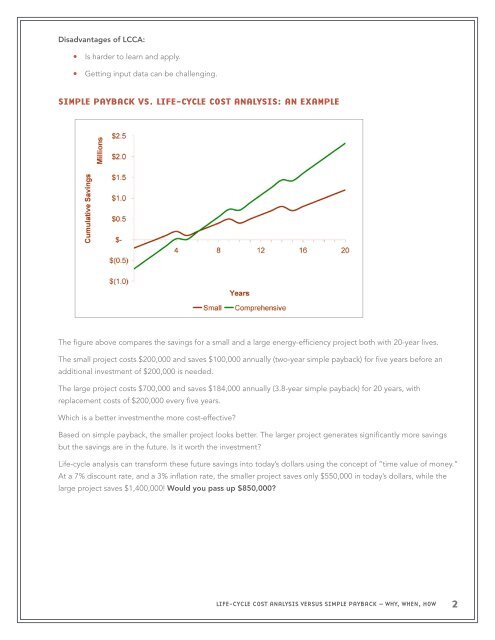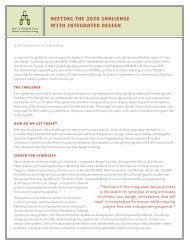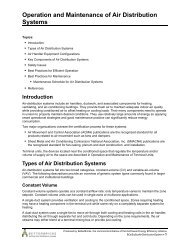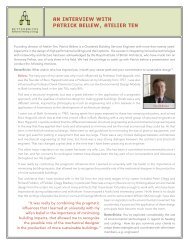Life-cycLe cost AnALysis versus simpLe pAybAck ... - BetterBricks
Life-cycLe cost AnALysis versus simpLe pAybAck ... - BetterBricks
Life-cycLe cost AnALysis versus simpLe pAybAck ... - BetterBricks
Create successful ePaper yourself
Turn your PDF publications into a flip-book with our unique Google optimized e-Paper software.
Disadvantages of LCCA:Is harder to learn and apply.Getting input data can be challenging.SIMPLE PAYBACK VS. LIFE-CYCLE COST ANALYSIS: AN EXAMPLEThe figure above compares the savings for a small and a large energy-efficiency project both with 20-year lives.The small project <strong>cost</strong>s $200,000 and saves $100,000 annually (two-year simple payback) for five years before anadditional investment of $200,000 is needed.The large project <strong>cost</strong>s $700,000 and saves $184,000 annually (3.8-year simple payback) for 20 years, withreplacement <strong>cost</strong>s of $200,000 every five years.Which is a better investmenthe more <strong>cost</strong>-effective?Based on simple payback, the smaller project looks better. The larger project generates significantly more savingsbut the savings are in the future. Is it worth the investment?<strong>Life</strong>-cycle analysis can transform these future savings into today’s dollars using the concept of “time value of money.”At a 7% discount rate, and a 3% inflation rate, the smaller project saves only $550,000 in today’s dollars, while thelarge project saves $1,400,000! Would you pass up $850,000?<strong>Life</strong>-cycle Cost Analysis <strong>versus</strong> Simple Payback – Why, When, How2









